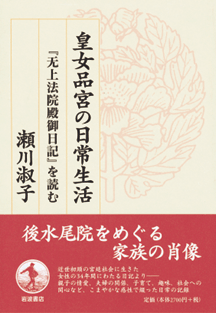
Dr. Cecilia Segawa Seigle Gr’71 returned to her native Japan to research one book topic and came across an unexpected treasure —a 36-volume diary written by a 17th-century Japanese imperial princess. Though the document had been hand-copied from the original in 1902, and stored in the Historiographical Institute at the University of Tokyo, scholars had all but ignored it until now.
“I was excited and wanted to introduce this woman to the Japanese public because this was a very rare diary,” says Seigle, who is professor emerita of Japanese studies in the Asian and Middle Eastern studies department at Penn. Though there was a “golden age” for Japanese women writers around the 11th century, as time went on, women’s positions declined and they became more oppressed. “So it is rare that such a socially prominent woman [in the 17th century] left a diary.”
Seigle’s new book, Kojo Shinanomiya no nichijo seikatsu: Mujohoin-dono gonikki wo yomu (The Everyday Life of Imperial Princess Shinanomiya: Reading the Mujohoin-dono Diary) has been published this year by one of the most distinguished publishers in Japan, Iwanami Shoten, under her Japanese name, Yoshiko Segawa.
Seigle previously had written a book about Japanese courtesans, who, though companions of socially prominent people, were considered “the lowest as far as society was concerned.” After finishing that project, she says, she got bored and began thinking about the opposite of these women and decided to research the Ooku, the walled-in area in Edo Castle where thousands of ladies-in-waiting lived, serving the wife of the shogun, the shogun’s concubines, and also the shogun when he visited his ladies. The Ooku, which also referred to the institutionalized body of women who occupied this space, had its own administration, customs, politics, and regulations. Its inhabitants “did not go out. The higher the position, the more secretive their lives were.” Those who left the service of Ooku were forbidden to talk about what went on behind those walls, leading to rampant rumors and the exaggerated material of kabuki plays and other fictionalized accounts.
Seigle went to the Historiographical Institute with a research grant to look for authentic documents, but found very little about Ooku. She did come across the diary of a 17th-century nobleman, Konoe Motohiro, who was invited to visit his daughter, wife of the sixth shogun, Tokugawa Ienobu.
Later she found out that the nobleman’s wife, Princess Shinanomiya Tsuneko, also wrote her own diary. The following summer Seigle began reading the document. (The original is in the Konoe family archives.)
It was difficult to understand at first, she says, because the princess used many “codes,” referring to family and friends by their positions in society. As people were promoted, their ranks kept changing, adding to the confusion.
Princess Shinanomiya “is not an analytical writer—she just describes what happened—but when you read the [diary], you find out so much about the people around her and the transition of her life and her thinking.”
While she comes across as a happy person, Seigle says, “The interesting thing is that she was in denial all the time. She would write only about happy events.” One of her favorite mantras was Medetashi. Medetashi. (How auspicious, how happy). “Even after something bad happened, she would repeat these words.” But over the course of her diary, in the face of a number of unhappy events, “she gradually changed from a very spoiled princess” to “an extremely good wife, good mother [to three children] and someone who was very pious in a secular way.”
Her daughter, Hiroko, left home with many servants at age 13 to marry the shogun’s nephew, who would unexpectedly be named the next shogun when he was 41. Unfortunately, Princess Shinanomiya’s diary divulges no secrets about Ooku. While Hiroko sent many letters to her mother, the princess reveals little of their content. “But we know that the letters came with presents after presents”: money, clothing, incense burners and beautiful folding screens.
According to Seigle, documents like this one haven’t found their way to the public in the past because of “chauvinism” among scholars typically obsessed with affairs of state rather than “women’s matters.” But this, she believes, is gradually changing. As Princess Shinanomiya would have said, Medetashi. Medetashi.




